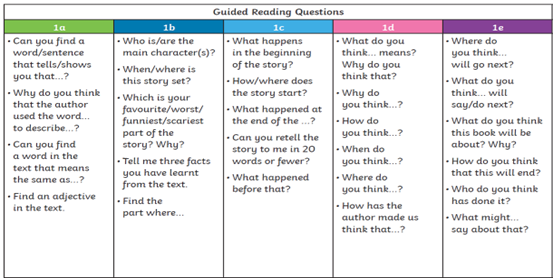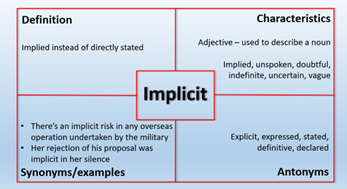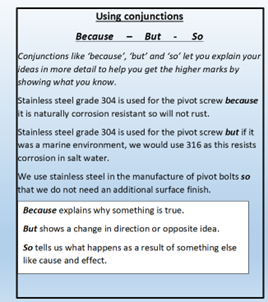November Blog 2023
I know many of you have been eagerly anticipating the next T+L blog, and here it is! Over the last couple of months I thought I would let the excitement grow, ready for this edition beautifully written by Katy King and Libby Osbourne. These two ladies oversee our Literacy and Numeracy provision in the College, which will play a major role in improving the life chances for our children as they progress into adulthood. It is a big responsibility, and one we must all support in our given areas.
First up, Katy King.
Literacy
In order to support our students’ attainment with regard to literacy, we need to maintain a consistent, unified approach to our three strands: reading for pleasure, oracy and the mechanics of writing. It is vital we all remember these strands.
READING FOR PLEASURE - DEAR Time
Our goal is to raise attainment by increasing reading skills and a big part of that is reading for pleasure. During tutor, years 7 – 9 are expected to be reading a physical book or a digital SORA book from 9.10. We need to promote their reading aloud and fluency by listening to them read and asking questions to check understanding and engagement. The suggested questions below are a reminder of the resource given out in September.

Tier 2 vocabulary
We are continuing with the Tier 2 words chosen by HoS last half-term. These words increase our students’ vocabulary, which will help them access their GCSE questions – they can’t be successful if they can’t understand what they are being asked to do! To help teachers in their explicit teaching of these keywords, there is a bank of Frayer templates in Staff Resources under Literacy. These need to be embedded into our lesson plans, can be displayed on our Learning Walls and could be used as quick CFU activities where students complete them to show they understand the vocabulary.

Oracy
Think/pair/share remains a focus and using this to encourage all students to participate (especially our disadvantaged and SEND students). It helps students rehearse their ideas before committing to paper and can be an effective way of sharing ideas, hearing other opinions and addressing misconceptions. The use of mini whiteboards here is vital; get them to jot their own thoughts on the board and then share with their partner to agree key points before they share with the class. In addition, because/but/so sentences are a helpful tool in scaffolding these discussions and in translating them onto the page, we have a written outcome where the students support their ideas with reasons.

Marking for Literacy
All teachers are teachers of Literacy regardless of their subject specialism, and we need to be consistent with the feedback we give to students on their written work. The expectation is that all teachers are using the code found on the Literacy stickers to highlight incorrect spellings, punctuation, capitals, which will allow students to red pen respond and improve. We need to teach them that excellent writing is a process and accuracy of the basics is a key component to this.
Over to Libby..
Numeracy
Supporting our students to understand and develop their numeracy skills is the responsibility of all teachers, in exactly the same way that it is for literacy. All teachers must be aware of the demands their learning area makes on their student’s numeracy and be able to support them with this. This isn’t about doing anything extra; it is just about being aware of where numeracy skills are required, highlighting these areas, and building on these skills. By doing this, you will be making a valuable contribution to developing numeracy in all learners.
Numeracy skills include being able to:
- Manage time and estimate the required time needed for a task.
- Order events, understand dates, construct and use a timeline.
- Use direction, position, and shape.
- Plot and interpret graphs and tables.
- Use and convert measurements.
- Calculate and compare statistics, including averages.
- Round numbers to help with comparisons.
- Understand and calculate with money.
- Understand likelihoods and probabilities.
- Calculate and understand percentages, fractions, and ratios.
Numeracy tip mats (In numeracy folder on IL)
These 3 mats are designed to support staff and students with the mathematical methods involved within skills. They can be used as a laminated self-help resource for students to use during a task, or a slide or display to remind students about the mathematical skills they will require for a given task. They cover number skills, algebra, shape, space, and measure, and data handling.
Handy resources (In numeracy folder on IL)
Total word out – Students have to identify and total keywords from the lesson. You can give students a total they have to achieve with three or more words, and you can extend this by getting them to then complete calculations with this total. Students could also write down facts they have learnt, total the score for each, and then identify the mean or modal letter. This resource can be used and adapted to suit all subjects.
Thermometer of understanding – This resource helps students with their understanding of directed number. Students can rate their understanding of a topic, lesson, or part of the lesson using the thermometer. It can help students recognise what went well and identify the steps they need to work on for their following lessons.
Impact line – This could be used in a variety of subject areas and help students with their understanding of negative numbers. Students come up with (or are given) 5 advantages and 5 disadvantages on a particular concept or topic. Students then work together to discuss and decide the impact order of each one. The most positive impact (+5) or the most negative impact (-5) and no impact (0).
Venn diagrams – These are a really good way for students to compare similarities and differences. It could be used to compare texts or characters in English, or positives and negatives on topics in humanities.
Battlewords (Battleships game) – This game is based on coordinates (2 levels included, 1 and 4 quadrants) and is to help students remember and define keywords. This would be good for a recap starter, plenary, or revision activity. Students pick 5 keywords to write in their grids (without their opponents seeing) which are allocated points from 1-5. The students then take it in turns to pick coordinates on their opponents’ grids. If they land on one of the letters in the keywords, the other player must share the letter with them. They then need to try and workout what the key word is and get bonus points for working it out before revealing all the letters, and a further bonus point if they can write down a definition of the word.
All subjects should be aware of how they support both Numeracy and Literacy when assessing their departments and if you need any support in either area, please do contact the co-ordinator who will help formulate your subject plan.
